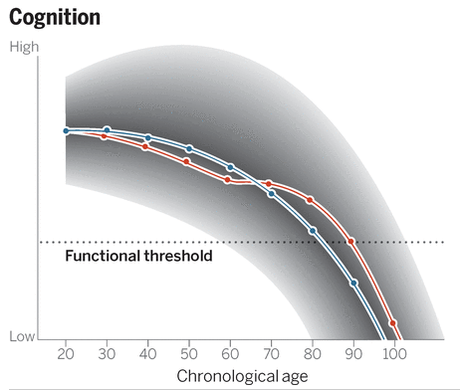This post points to another of the articles in the Science special issue on aging. Lindenberger summarizes key features of human cognitive aging from the combined perspectives of life-span psychology and the cognitive neuroscience of aging, and notes a number of longitudinal studies that suggest that leading an intellectually challenging, physically active, and socially engaged life may mitigate losses and consolidate gains during cognitive aging. Here is a summary figure from the article:

Figure. An individual’s range of possible cognitive developmental trajectories from early to late adulthood.
The blue curve shows the most likely developmental path under normal circumstances. The fading of the background color indicates that more extreme paths are less likely. The functional threshold represents a level of functioning below which goal-directed action in the individual’s ecology will be severely compromised. The red curve represents the hope that changes in organism-environment interactions during adulthood move the individual onto a more positive trajectory. Beneficial changes may consist in the mitigation of risk factors, such as vascular conditions, metabolic syndrome, or chronic stress; the strengthening of enhancing factors, such as neuroplasticity; or both.

